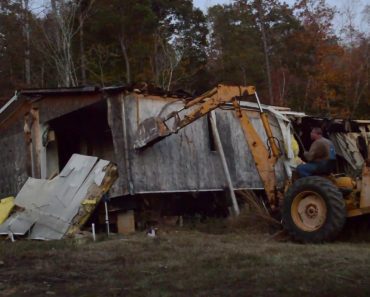I decided to make an experimental airlift mud pump to clean out my old pond. I have a spring fed pond that has been abandoned and allowed to silt over. Brush has grown around it and clogged it with rotting leaves. It has gotten to the point that in sections the silt is so […]
Category: How To (How I Did)
You could call this a How To – but people often tell me I did it wrong – now to be fair you can’t really tell me I can’t do it that way, when the video shows I actually DID do it that way – so to cool down the hateraide – lets just call this HOW I DID
Demolishing a Trailer with a Backhoe
I wanted to tear down the trailer in a way that made good use of the lumber, but after almost two years of messing around, I decided to just do it. The video above shows my backhoe demolishing a trailer. This was so much easier than knocking boards with a sledgehammer. Using the backhoe […]
Disconnecting a Trailer Marriage Wall
Disconnecting a Trailer Marriage Wall is not something that is easily found on the internet. I know I searched for hours trying to find out how to do it. Finally, I sucked up my fear of heights and got my big self up on a ladder and started tearing into things until I found […]
Truck Pulling Down a Trailer Wall
I used the backhoe to tear down most of the trailer, but due to the hillside behind the trailer, I could not get the tractor into position to tear the building completely down. Lucky I had some chain and a receiver hitch shackle like the one pictured. I simply clipped the chain to the shackle […]
How to Spray Foam in a Conex Box
This is an experiment in using spray foam alone to insulate a conex box. This particular spray foam in a conex box idea did not work. The problem was the box developed condensation inside which caused the spray foam to fall off. If I had supported the spray foam by adding a sheet of foam or other […]





